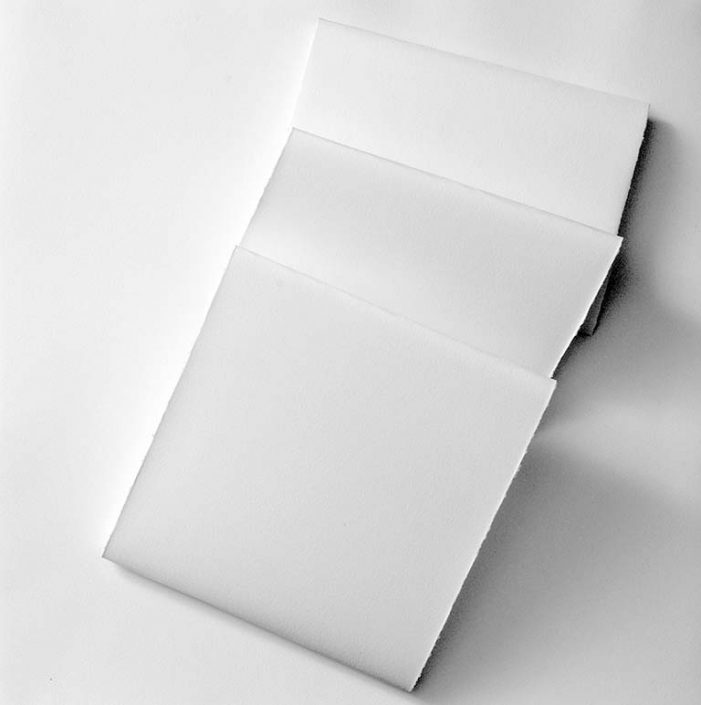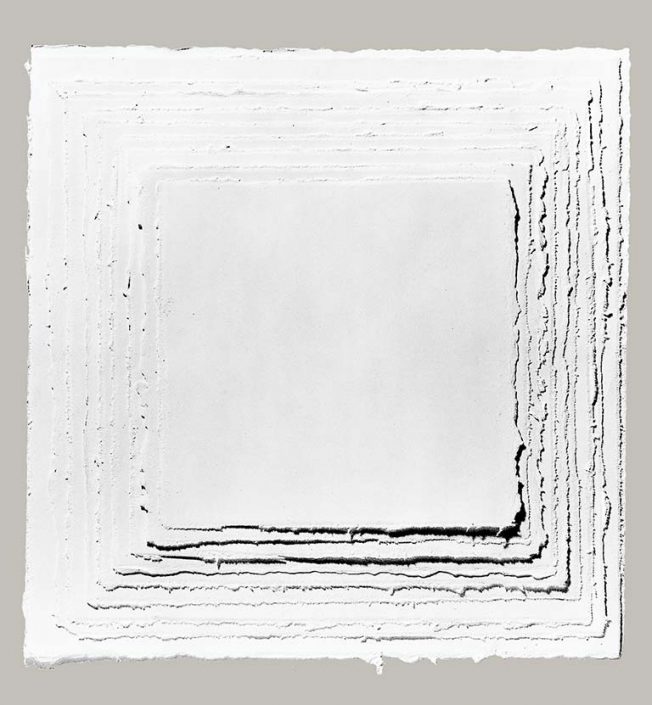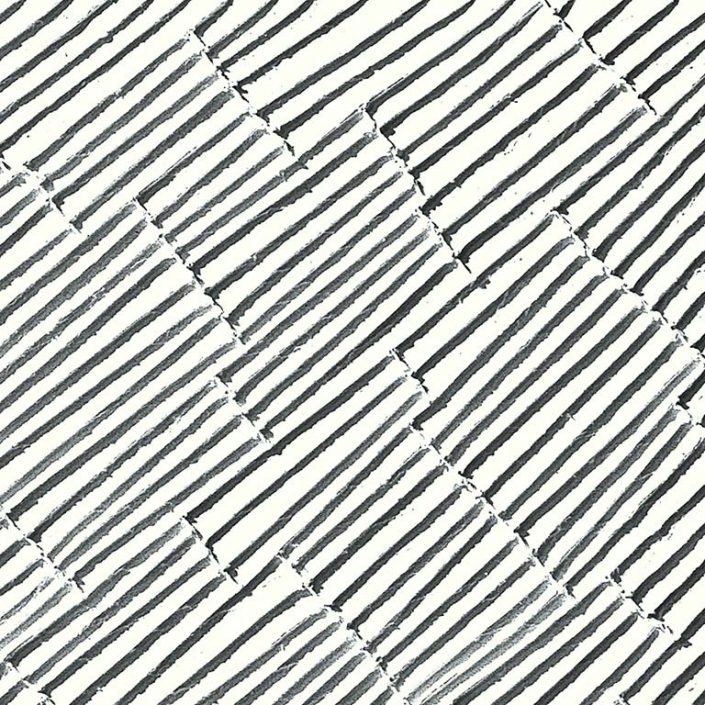Basis for Light – Works with Paper
Jeanne Masoero uses paper in what might be called a painterly way. At a superficial glance, from a distance, her new works could be mistaken for textured white paintings in creamy oil colour. This is particularly true of the earlier and more irregular of the series of works which hang on the wall. But closer inspection reveals that the light is reflected from them in quite a different way than from paint. They are in fact cotton-duck canvases on which torn or cut paper is carefully layered and stuck down with PVA. Finally part of the top surface of the paper is torn off to give the rich, creamy texture which can at first make one mistake these for paintings. The richness is the result of the way the light strikes the irregular surface of the paper.
Paul Overy, Basis for Light – Works in Paper 1976 – 1979, Institute of Contemporary Arts, London, 8 March – 1 April 1979
In her search for a new texture and dynamism in the landscape of her work, she had already experimented with paper, and had also begun to study American Indian design. The dramatic landscape of the Yucatan, the architecture and the extraordinary, echoing spaces of the great Mayan and Aztec sites had a profound effect upon her. It was on her return from Central America that she began the three-dimensional paper reliefs that were shown at the Institute of Contemporary Art and Ikon Gallery. …..These had an extraordinary presence. And if at first glance it might have seemed that the artist had abandoned her original interests, colour on canvas, for quite other ones – three dimensional, mostly white work with paper – in fact these new series represented a precise continuum: the search for depth, using light and shadow.
Jeanne Masoero: Background to an Artist’s Life by Edward Rutherfurd, JEANNE MASOERO: A SURVEY, Lund Humphries 2002



























